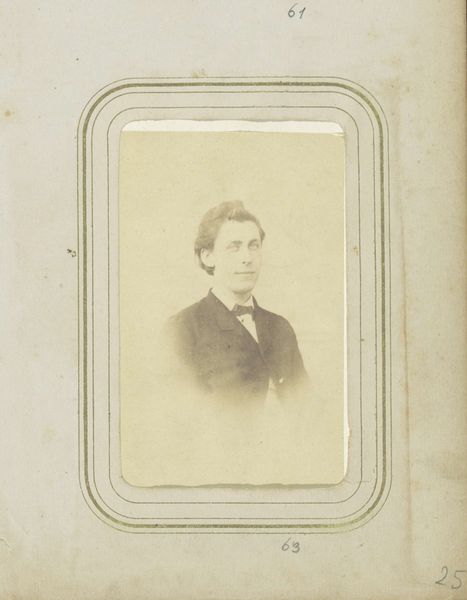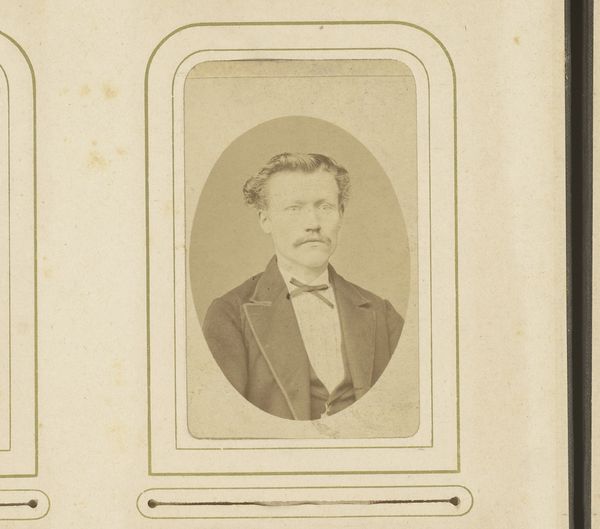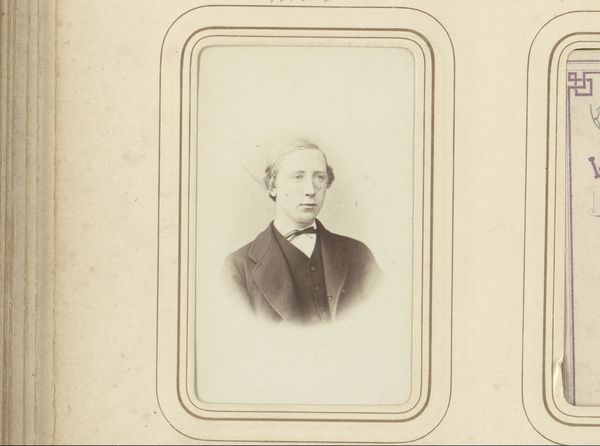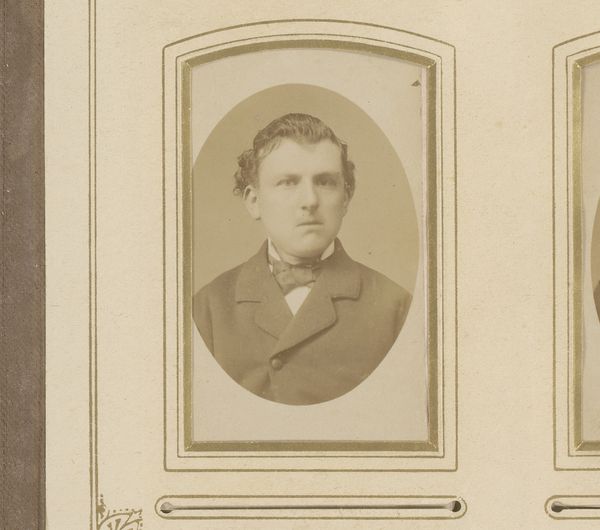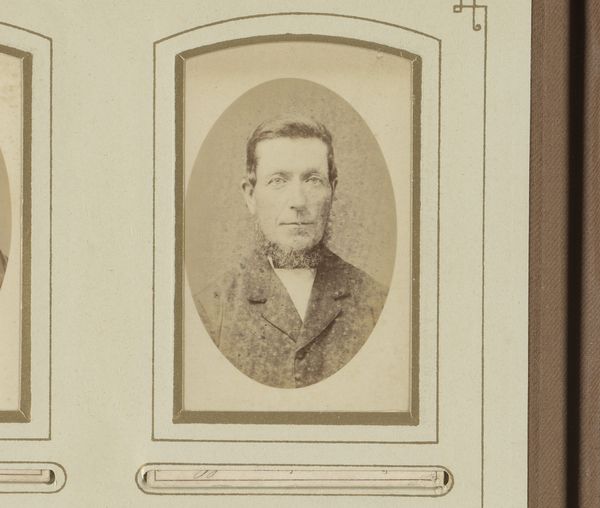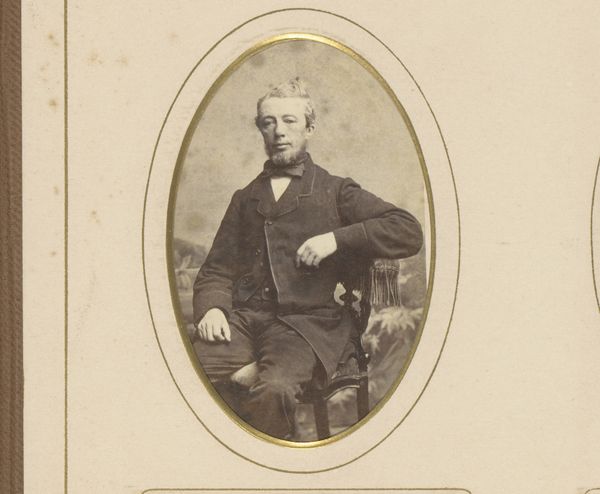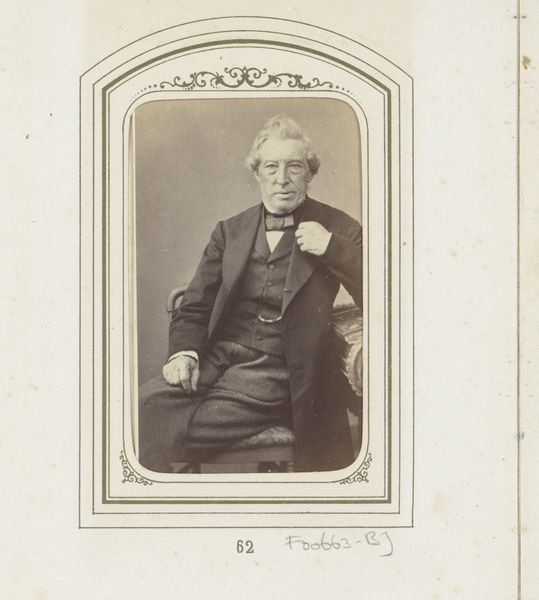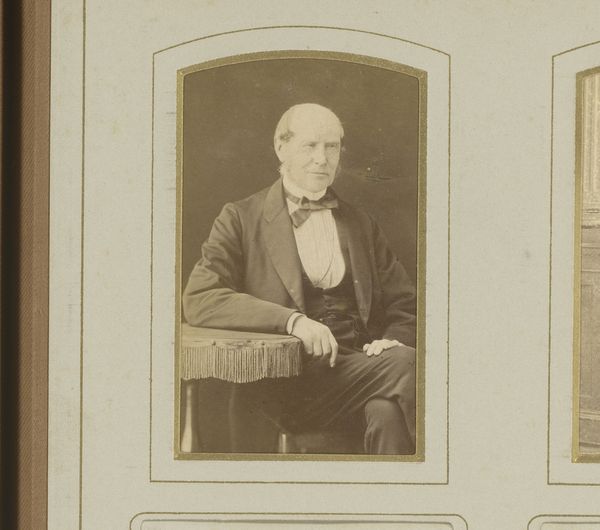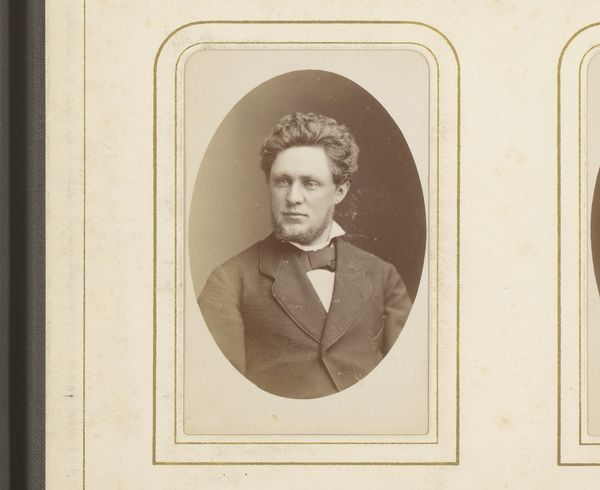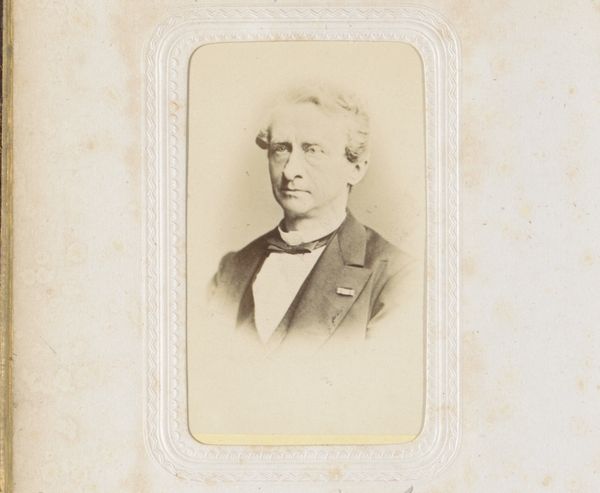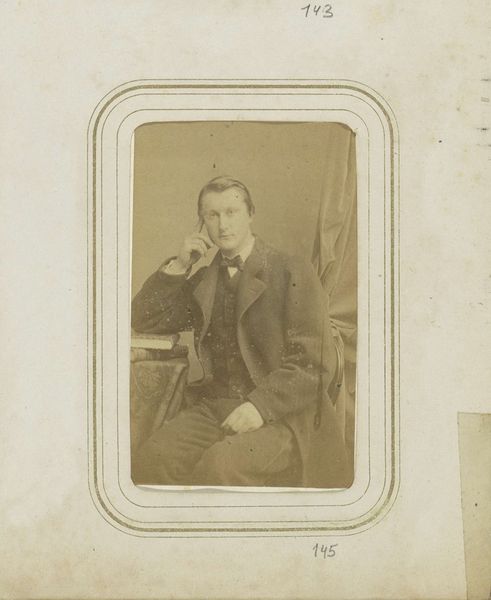
photography
#
portrait
#
photography
Dimensions: height 83 mm, width 52 mm
Copyright: Rijks Museum: Open Domain
Curator: Looking at "Portret van een man," an albumen print hailing from the Rijksmuseum, created sometime between 1867 and 1884 by Wegner & Mottu, what are your initial thoughts? Editor: I am immediately struck by the gentle sepia tones and the soft, almost dreamlike quality of the portrait. It's not sharp or defined, but it’s evocative. Curator: The albumen print was a popular method for photographic portraits at the time, often commissioned by the burgeoning middle class as a marker of status. The professional approach, exemplified by the atelier Wegner & Mottu, speaks to the formal conventions of that era. These studios offered access to a controlled and refined self-representation that photography made possible for an ever larger segment of society. Editor: The composition certainly reinforces this. We have a classic, tight framing, head and shoulders, isolating the sitter in a way that draws you immediately to the face and its expression. It has a carefully composed and curated elegance, even in its softness. It is fascinating how it draws you in with simplicity. Curator: Consider the implications of displaying this image, and countless others like it, today. In the museum setting, these once-private markers of bourgeois identity are now part of a wider cultural archive. They speak to social mobility and the evolution of photographic techniques, giving voice to the Victorian era's obsession with identity. Editor: And this method itself has changed how we experience and understand portraiture, hasn’t it? With its gentle diffusion, the light renders detail almost ethereal, encouraging a kind of romantic engagement. I can almost invent the subject's interiority through the arrangement of tone and pose. Curator: Indeed. We bring our own historical biases, too. How we "read" this portrait now is likely very different than its contemporary audience would. Editor: Agreed. Though I admit I appreciate how this image allows for a contemporary, intimate experience nonetheless. Curator: Absolutely. Its quiet impact serves as a potent reminder of how visual history can continue to invite dialogue between past and present.
Comments
No comments
Be the first to comment and join the conversation on the ultimate creative platform.

